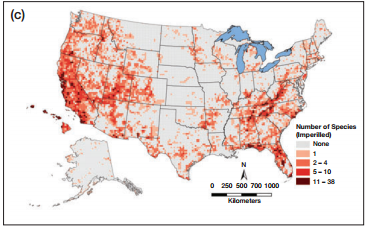 The list of endangered species has grown from fewer than 100 in 1973 to more than 1,500 today, while less than two percent have recovered and been removed from the list. In their new, broad-scope synthesis report, the Ecological Society of America has proposed innovative strategies to increase the effectiveness of the U.S. Endangered Species Act .
The list of endangered species has grown from fewer than 100 in 1973 to more than 1,500 today, while less than two percent have recovered and been removed from the list. In their new, broad-scope synthesis report, the Ecological Society of America has proposed innovative strategies to increase the effectiveness of the U.S. Endangered Species Act .
The report summarizes the causes and patterns of species endangerment in the U.S., identifies key successes and shortcomings of recovery programs and discusses several strategies that might increase the effectiveness of the U.S. Endangered Species Act implementations. The 39-page report, “Species Recovery in the United States: Increasing the Effectiveness of the Endangered Species Act,” relies on NatureServe Network data to show how species have fared, and develop a practical strategy for listing imperiled species.
Report authors suggest that there are many more species that could qualify for protection but are not currently listed. They also note that federal and state agencies, as well as private stakeholders, would benefit from a single, multi-agency federal license to access and support the NatureServe Network database. This arrangement would foster greater data sharing and provide more sustainable funding for data development and delivery.
NatureServe’s databases include substantial information about the status, trends, threats and mapped distribution of listed species and thousands of other species at risk because of low population numbers or threats to their habitats. The report authors used contemporary species occurrence records maintained by NatureServe and its Network Programs to evaluate the geographic distribution of listed species.